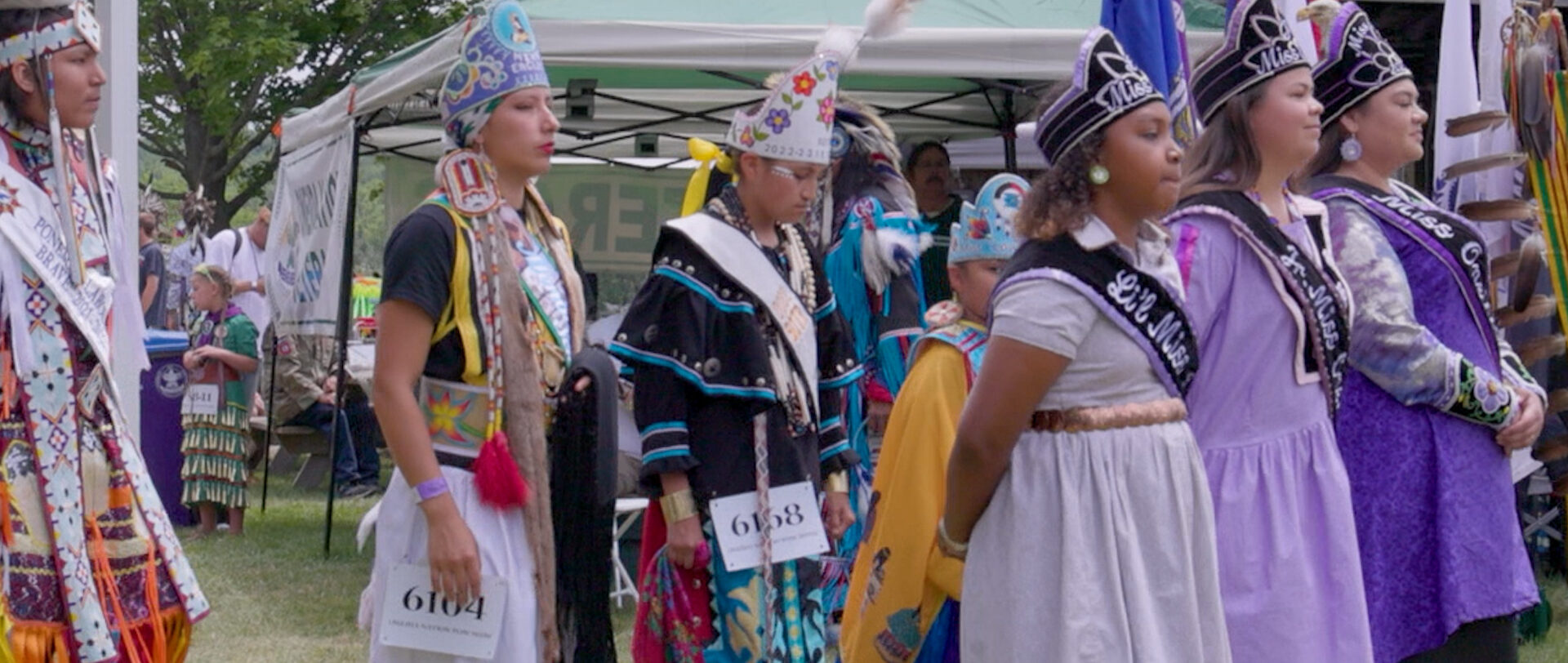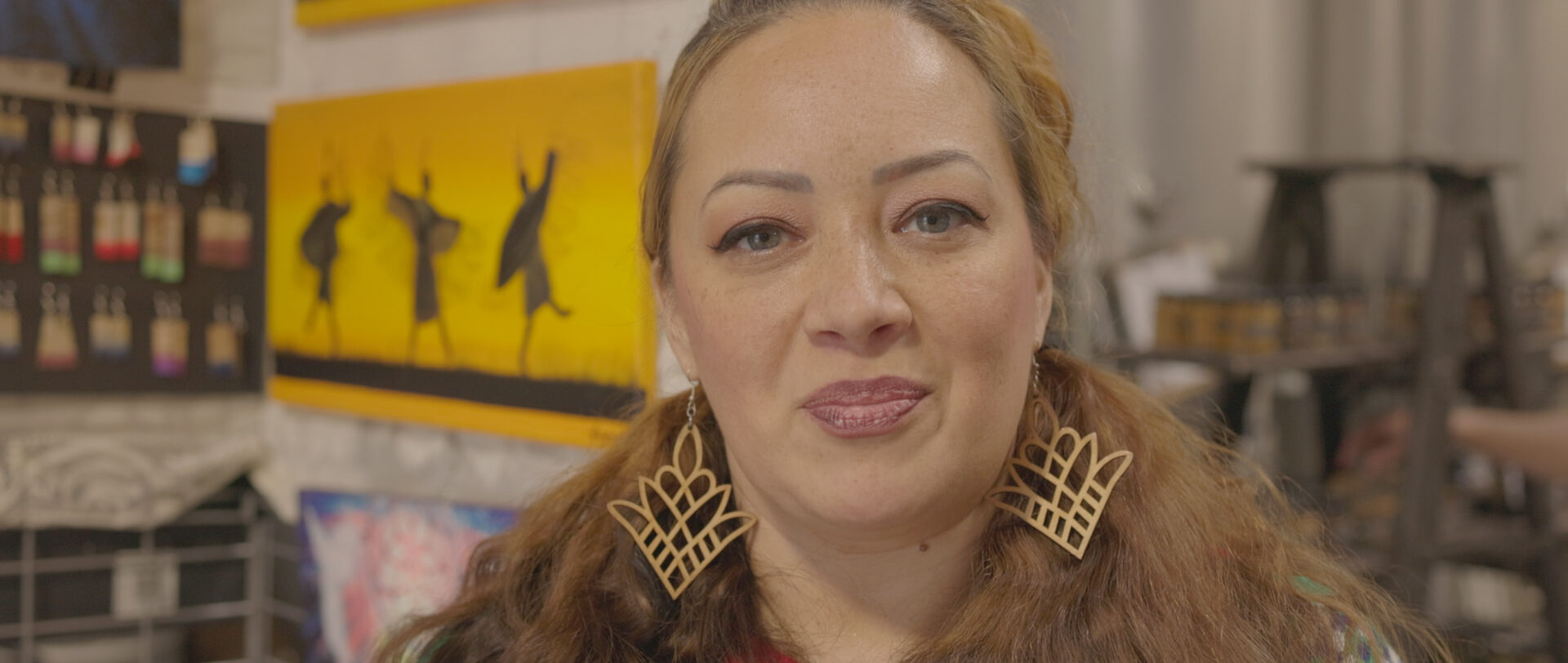After her kids were grown, Harmony Hill made the jump from 9 to 5 to full-time artist — something she always wanted to pursue. She describes it as a leap of faith.
Hill, who is an enrolled member of the Oneida Tribe of Indians of Wisconsin with lineal and cultural ties to the Ho Chunk and Stockbridge Munsee Nations, spent her childhood traveling with her family to powwows around the country where she sang and danced, wearing regalia she created herself.
“There was never a fixed line between the rest of your life and doing art because everything you were doing was art — whether it was singing or dancing or learning about design. [Art] was always there.”
While social distancing in 2020, Hill continued putting energy towards her work, but was frustrated that selling online was not profitable.
She also knew that because she had experience going to art school, she had access to knowledge and resources that many Native artists in her community were left out of.
In summer 2020, Hill founded the Red Magic Festival to support and bring the Native arts community in Milwaukee together. Hill knew it was important that the event was held within the community it served; the 53215 zip code has the highest population of Native people in the city, so she rented a park in the area.
“The whole [festival] was a leap of faith. I thought that if it works out, that’s great, but if it doesn’t, I just won’t do it,” Hill explained. “The community steers me where I should go.”
The response was more than she expected. That first year, 30 artists participated — some of whom had never shown their work before.
“When it seemed like the rest of the world was bored [quarantining], Native people were busy creating new work and learning new skills. It was so inspiring to me and I wanted to be part of that growth,” Hill explained.
“After the first event, I had a lot of people come up to me crying saying ‘I’m able to pay my bills because of this.’”
When artists began requesting to register for the next year’s event, Hill knew she had to continue. Summer 2024 will be Red Magic’s fourth year. The festival has since grown to include traditional and contemporary music and dance performances.

Hill hopes the event helps shatter a “flat view of what Native art is, and what Native artists do,” for non-Native attendees. “[People can talk to] actual artists about their work, how they make it, how they source things. That has a lot of value.”
The work remains deeply grassroots; Hill funds the festival out of her own pocket and fundraises when she can. She and her son tackle all of the logistics. In addition to the festival, they started an artist resource called Red Magic Artist Collective, which sends opportunities to Native artists that are tailored to their interests — be it residencies, craft shows, or gallery opportunities.
Hill is also working on an online directory of Native artists.
With the directory, as well as with the festival, Hill said she is intentional about not sorting artists into categories – such as “traditional” and “contemporary” or “craft” and “fine art.”
“We don’t define art the way the western art world would. I’ve had some pushback with that where spaces will say ‘We only want fine artists,’ but [I don’t think in those categories]. We’re not measuring our work through colonial standards.”
For her work, Hill received the Wallace Pyawasit Leadership Award from the University of Wisconsin, Milwaukee. She is also now the Chair of the Oneida Nation Arts Board.
Harmony Hill“We don’t define art the way the western art world would. I’ve had some pushback with that where spaces will say ‘We only want fine artists,’ but [I don’t think in those categories]. We’re not measuring our work through colonial standards.”

Much of Hill’s own artwork focuses on the strength and power of Native women, and the responsibilities they bear within their families and communities in the face of traditional gender roles, which can be a barrier to success and proper recognition. She has shown her work as part of exhibits raising awareness about the Missing and Murdered Indigenous Relatives crisis, but rather than focus on grief, her work celebrates daily resilience in the face of trauma.
While the event is open to all genders, almost everyone who has volunteered to support Hill with Red Magic is a woman.
“It’s been my experience that leadership usually comes from women,” she said. “I want to be able to highlight how much women are doing behind closed doors.”
